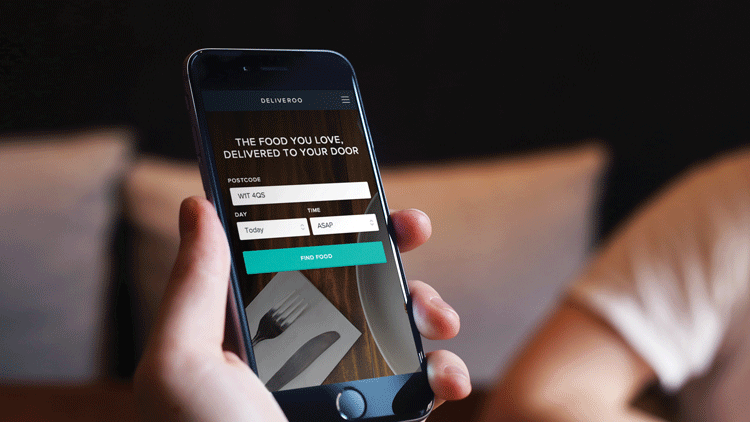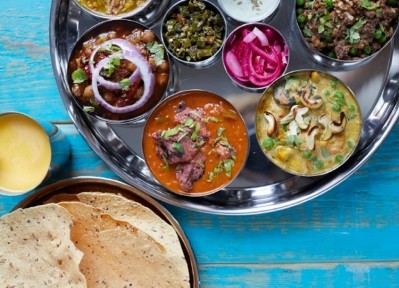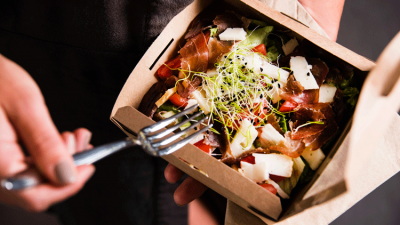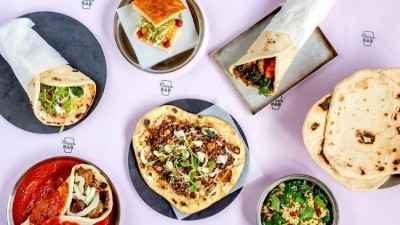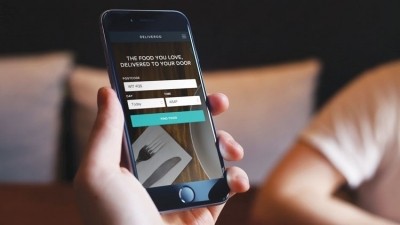Boxing clever: How takeaway and delivery took hold of the restaurant world
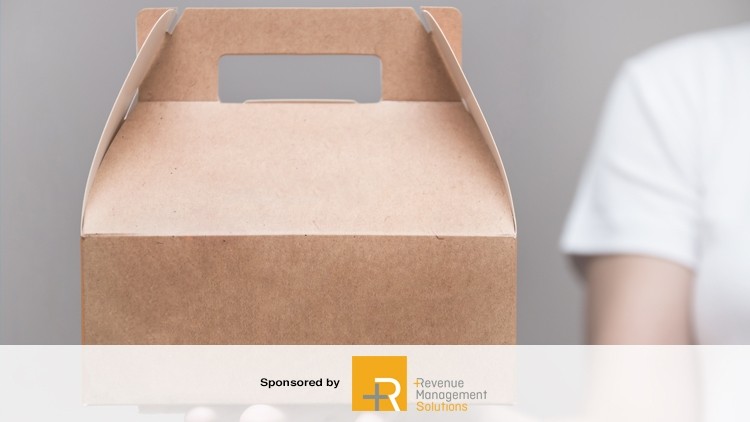
Last month Deliveroo created a billboard made entirely from burgers. Standing four metres high and six metres wide, it was made using over 2,000 burgers from restaurant brands including Gourmet Burger Kitchen, Byron, Polo, Beer + Burger and Bleecker, which were handed out to people for free.
Such burger beneficence marked a significant milestone that Deliveroo had passed – having delivered 10 million burgers to customers in the UK. Not bad for a company that didn’t exist five years ago.
The rise of Deliveroo, and indeed the delivery and takeaway market in the UK, has been meteoric. Once the preserve of high-street Indian and Chinese restaurants and US pizza giants Domino’s and Papa John’s, more and more restaurants have got in on the delivery act in recent years. Between them, the two big food-delivery protagonists in the UK, Deliveroo and Just Eat, have more than 36,000 restaurant partners over here (Deliveroo around 8,000 partner restaurants, Just Eat 28,000).
It has become big business, too. Since launching in 2013 Deliveroo has raised $859.6m in a series of rounds of funding, one of the largest investments to date into a tech company in the UK or Europe. The money, says Will Shu, the company’s founder and chief executive, will help it continue its growth. “This new investment will help Deliveroo to expand in the UK and around the world, bringing ever more great food directly to people’s doors,” he says.
Big business
For restaurants in the burger business, this is potentially good news. Deliveroo has undoubtedly grown the delivery business of numerous restaurant groups and, in some cases, added an entirely new revenue stream to their business.
But there are fears from some quarters of the restaurant sector that this growth comes at a price, with people choosing to eat at home rather than dine out and some restaurants suffering as a result.
This is something the delivery brands refute.
At the end of last year, Deliveroo commissioned research that claimed it added £460m to the eating-out sector in the year to June 2017, a figure calculated by looking at the increase in sales at restaurants that signed up to it, as well as the resultant rise in goods bought from suppliers. Moreover, a report, commissioned by Capital Economics, estimates Deliveroo could be worth as much as £1.5bn to the UK economy by 2019.
Deliveroo claims it added £460m to the eating-out sector in the year to June 2017
Questions are also starting to be raised over the amount of customer data that companies such as Deliveroo collect and what they might do with it, with some believing they could eventually launch restaurant operations. “If I was Deliveroo, I’d be looking at becoming an operator… so they [could] start to become a competitor of ours as well,” says Mark Smith, managing director at casual dining brand Pho. “They control the customer data. They know all the Vietnamese noodle customers who’ve ever ordered Deliveroo through us. Combine that with a dark kitchen and the data, that’s really powerful for them to start thinking about being an operator.”
A dark art
Dark kitchens, production units set up specifically for delivery, are becoming increasingly popular in the delivery space. Called Deliveroo Editions in Deliveroo’s case, its units were officially launched in April last year with the aim of working with more than 200 restaurant brands in 10 UK cities by the end of 2017.
Yet, instead of looking to create its own restaurant brands, Deliveroo insists that Editions is instead nurturing the best street-food startups to potentially help them make the move from market trader to bricks-and-mortar operators. Last month it launched a ‘pop-ups’ programme that gives street-food brands 12-week slots at its Editions kitchens, with the most popular to be offered the chance to become a permanent resident at Editions.
The first tranche of operators taking part are SpiceBox, the vegan Indian operator currently at KERB Camden; Vegan Matcha Burger Bar, which claims to be the first vegan-only brand on Deliveroo; Kabab, an Antipodean-inspired gourmet kebab concept; and SuBuSake, a Japanese fusion offer that comprises layers of sushi rice, fresh sashimi, vegetables, toppings and sauce. The four operators have launched at Deliveroo’s Canary Wharf Editions site.
“Opening a new restaurant or expanding can require a capital investment of £250,000 up front. Coupled with a lack of suitable restaurant sites across London and the inherent risks of scaling up, too many brands serving great food are never able to expand to the next level,” says the company. “Editions ‘pop-ups’ wants to give street stalls the same opportunity to expand without the initial risk of setting up on the high street. Deliveroo is using its scale and expertise to help budding new chefs reach new customers, improve their menus and use top-of-the-range kitchens.”
The programme will be rolled out across Editions sites around the country, with the most popular brands being given the chance to become a full-time Editions partner. Deliveroo isn’t alone in using delivery-only kitchens. With sites in Leeds, Manchester and London, dark kitchen group Vessel has begun its rollout across the UK. The recent openings follow on from a pilot of the operation in Blackwall, Canary Wharf, in partnership with Deliveroo, but for subsequent sites Vessel is working with Just Eat and also Uber Eats.
Restaurant operators license their brands to Vessel, which then produces the food in its dark kitchens, with brands operating at the new sites including Dirty Bones, Bird, Hop Vietnamese, Buns & Buns and Buns & Bao. Vessel plans to open some 50 sites, at which point it will expand its roster of restaurant brands.
“It’s very costly, for example, for Dirty Bones to open in Manchester or in Leeds. They don’t know if the market will like it, or whether the price is right,” says Luke Grob, Vessel’s VP of UK operations. “We cook the food, we take all the risks on the rent, and commit to a certain level of quality.”
The Indian food space is also making use of delivery-only kitchens. JKS, the company behind Michelin-starred Indian restaurants Gymkhana and Trishna, is continuing to expand the Motu delivery brand it launched in late 2016. The company currently operates Motu Indian Kitchens at four Deliveroo Editions locations (Battersea, Islington, Canary Wharf and – most recently – Swiss Cottage) and co-founder Karam Sethi says it was always the group’s intention to use Editions as a low-cost means of exploring suburban London.
“Motu has given us the confidence to create a high-street restaurant format,” says Sethi. Indian restaurant group Kricket has also recently launched its first delivery-only concept, Namma by Kricket, with the first unit at the Editions in London’s Stepney Green. Namma offers traditional Indian dishes ‘with a twist’, with menu dishes that include pork cheek vindaloo (£9); pumpkin and paneer (£8); and Indian doughnuts soaked in rose water and cardamom syrup (£3).
The price is right
Motu’s success, according to Sethi, is down to the fact that its dishes have been designed for delivery – and delivery only. “To operate in this world successfully, you need to accept that the food won’t be the same as it will be in a restaurant. We’re not trying to take what we do in Gymkhana and make it work for delivery,” he says.
Its dishes also have a higher price point than most traditional curry houses, with most curries north of £10, which gives Motu a premium point of difference. Getting the pricing right with delivery is essential, says John Oakes, CEO at Revenue Management Solutions (RMS), a customer analytics provider for the hospitality sector. “Takeaway and delivery channels can be a fantastic addition to operations, they can broaden the customer base, increase sales and induce loyalty,” says Oakes.
“However, it’s important for operators to truly understand pricing metrics to ensure they’re not only sensitive about the price to the customer, but also profiting once commission has been taken from any selected delivery partner. Analysing the EPoS data and defining which meals and products would be profitable should always be the starting point.”
Operators need a deep understanding of their own profit drivers to see where additional sales channels would be a benefit, says Oakes. They also need to remember at all times that customer satisfaction, efficiency of operation and the delivery of a quality brand experience are all critical to long-term success.
When looking to make money with delivery, the variable costs across food, labour and delivery of each order must be covered as a minimum, otherwise an operator will make a loss. “It is not a question of what cost percentage these orders are running at, it is a question of how much they can contribute to bridging the gap on fixed costs to full capacity,” says Oakes.
“In essence, an operator needs to make the strategic decision on how to fill that gap and delivery can be one of the answers. The point is not only about the cost for delivery, it is more about how operators ensure sales are incremental without cannibalising trade. If a restaurant is not running at 100% capacity, delivery will add to the profitability as long as variable costs are covered.”
Knowing what to deliver is also crucial. While certain dishes are very delivery friendly, others are not. Simply placing the entire restaurant menu online for delivery could be very damaging for a business if it ends up supplying food that simply just doesn’t travel. According to Oakes, the focus should be on items that are quick and easy to produce and those that travel well and aren’t easily damaged or destroyed.
There are other criteria. High-margin dishes and very popular items should feature on a delivery menu, as should dishes that are unique to a restaurant brand, to provide that point of difference. Oakes also suggests restaurants follow the lead of the likes of Domino’s with its meal deals and weekend and mid-week friendly offers that tap into different needs and try and build business during less busy periods.
“Operators should look to create special offers/bundles for the delivery channel. For example, if families are only ordering mains, it would make sense to create a special family meal package which includes highly profitable starters, desserts and say drinks on top of mains, to drive overall sales but more importantly margins.”
The growing role of tech
With the growth of the delivery market comes the creation of new technologies that can make it more efficient and help restaurants that are struggling to have both a sit-in and delivered offer. “It’s not a matter of should operators offer delivery services, it is more about how they are going to do it successfully, together with how best they prepare for it,” says Lee Leet, founder and CEO at restaurant technology supplier
QSR Automations.
“From a technology standpoint, this creates a lot of opportunity. Currently, operators are investing in multiple entry points for ordering, through the likes of delivery partners or EPoS providers. However, the focus really needs to be on an operator’s kitchen and how they will be able to complete orders as they open up additional revenue streams. The key to this is real-time data in the kitchen. This ensures that operators are accepting orders based on the capacity of their kitchen, allowing them to be able to quote accurate delivery and pick-up times back to partners and customers.”
Just Eat has the highest order volumes of any UK takeaway and delivery partner
Kitchen automation systems are helping restaurants achieve this, says Tim Brown, senior director for strategic accounts F&B EME at Oracle Hospitality. “Kitchen automation can help restaurants meet the demands of offering new services,” he says. “For example, it can manage customer expectations. If you’ve got a 100-seat restaurant and decide to do delivery as well, how do you manage capacity in the kitchen and provide more real-time delivery times to customers rather than the fictional 30 or 40 minutes based on cook times? Kitchen automation can collect data that helps restaurants better predict volumes and preparation times.”
“Technology is vital in delivery services,” adds Oakes. “To analyse the return on investment, it’s important for operators to track delivery data correctly, while ensuring it is integrated with the EPoS data to give an informed understanding of how customers use the various channels – such as eat-in, takeaway and delivery, together with how they purchase. These insights will also enable operators to develop channel-specific communication to ensure consumers return again and again.”
Oakes suggests using third-party sources, such as social media and customer rating websites like Trustpilot, to check customer satisfaction levels. This is particularly important, he says, because poor service and long delivery times could hinder overall customer satisfaction and consumers will likely associate their delivery experience with the restaurant brand, not the delivery partner.
Tom Weaver, CEO at Flyt, also believes that technology will continue to shape the delivery sector. “The number of channels that consumers can order through keeps increasing, whether that is through Just Eat or Uber Eats, or through new chatbot channels such as Facebook Messenger using the venues’ own fulfilment network,” he says.
“This provides great opportunities for the takeaway and delivery sector to grow sales, but also introduces ever-increasing complexity to meet the high expectations of consumers. It’s becoming vital that siloed services are brought together to help business owners improve their efficiency while, taking part in the most profitable channels for their business. Integration is becoming a business imperative for the sector.”
Innovation and integration in technology is making the takeaway and delivery experience better and easier for both customers and restaurants. Dark kitchens, meanwhile, are likely to continue to spread across the UK. Whether regarded as an opportunity or a threat, all signs point to the sector continuing to grow. It’s unlikely it will take Deliveroo as long as another five years to deliver its 20 millionth burger.
The Insider
John Oakes
CEO, Revenue Management Solutions
What are the sector trends?
The rise in on-demand delivery shows no sign of slowing down. Most restaurant operators see the shift as a good thing for business, with some even moving to a delivery-only model. The trend is here to stay. Indeed, UK food industry insight specialist NPD Group calculates 2018 will see an additional 83 million visits to UK foodservice providers, up 0.7% on 2017, followed by a 0.8% increase in 2019 to a further 93 million. One of the main drivers is delivery, which NPD confirms should continue to expand rapidly, projected to grow an additional 101 million visits by 2019 (up 16% on 2017). Breakfast, lunch, burgers and the casual dining boom are seen to be the linchpins of this continuing trend, and NPD is predicting an additional spend of £656m (+17%) by consumers on delivery occasions by 2019. These figures cannot be ignored.
What do restaurants need to be aware of?
Operators should keep in mind that increased business isn’t better if it doesn’t make money or add incremental sales. The value of each order will vary depending on whether a restaurant is located in a densely or more sparsely populated area. From a delivery perspective, once the commission percentage has been deducted, which can be anything from 15% to 30%, operators need to subtract the additional costs of the new service from the net revenue per order, to gauge potential profit margins.
How should they set delivery prices?
If operators plan to offset some of the commission by adding a delivery charge, they need to bear in mind customers focus on the total cost paid. Just because a £4 delivery charge might not seem exorbitant compared to other local area services, customer sensitivities to pricing should always be given top priority. To give an example, if a customer orders a meal that comes to £11.99, will they still place that order when the final total with delivery is £15.99? Operators should be using transaction data to analyse price sensitivities before setting delivery costs, which should be a natural extension of how menu prices for walk-in customers are determined. Managing pricing not only involves the price of each item, operators should be focusing on managing total spend and profitability per delivery order.
www.revenuemanage.com
020 3755 0960
